Articles of 2006
A tough, tough guy named Mustafa Hamsho
Mustafa Hamsho was only 19 years old when he arrived in New York as a stowaway aboard a Greek freighter in 1973. All he had in his possession was a crumpled piece of paper with the name of a distant relative who owned a diner in Brooklyn, a fierce work ethic, and an immeasurable desire to succeed.
It did not take him long to grow disheartened as he sweated over a kitchen sink, washing dishes for 12 to 15 hours a day. He had come to America with a grand scheme, but not a grand plan, and it didn’t take him long to realize the golden goose was nowhere in sight.
Mostly he daydreamed about his amateur boxing career. Fighting for his native country of Syria, he had beaten a Bavarian in Bavaria, a Russian in Russia, and several Greeks in Greece.
Before long, Hamsho made his way to the now defunct Gramercy Gym on East 14th Street in Manhattan. On his first day there he asked to spar and wound up in the ring with “Irish” Bobby Cassidy, a light heavyweight contender who was perennially rated in the top-ten.
“Mustafa was a tough, tough guy,” said Cassidy. “Crude but tough. We were all experienced professionals and we still had difficulty slowing him up. He never stopped coming forward. He could take the punishment and really had a will to win and get better. It was obvious he wasn’t a quitter. Once he showed up, he never left.”
“I was never afraid of any man,” said Hamsho, who after getting out from under the thumb of his first manager would come within punching distance of the middleweight championship
Former champion Alan Minter, who Hamsho beat by a 10-round split decision in June 1981, said Hamsho was the strongest man he ever faced – and that includes Marvin Hagler.
And Hagler, who twice beat Hamsho in world title fights, has consistently stated that if he had not been around it was Hamsho who would have reigned supreme for many years.
During a career that spanned from 1975-89, Hamsho compiled a 43-6-2 (27 KOs) against the best fighters the division had to offer. As a 7-1 underdog, he beat Wilfred Benitez (W 12), as well as the previously undefeated Bobby Czyz (W 10) and Wilford Scypion (W DQ 10), and Curtis Parker (W 10).
Hamsho, now 52, can’t even begin to guess who his toughest opponent was. “They were all tough,” he said while having dinner at a midtown Manhattan café on Christmas evening. “No one was really tougher than any other.”
And no one was tougher than Hamsho. Considering the fact that he took inordinate amounts of punishment and received well over 100 stitches during his career, his handsome face is relatively unmarked, his nose is straight, his speech pattern is clear and concise, his thought process is sharp, and his memory is nothing short of amazing.
“I guess I have good genes, and maybe I had better defense than people think,” he joked. “After fights when I got cut, I would go to Florida, put this special oil on my face, and stay in the sun and the salt water. I think that helped me heal.”
In the early days of Hamsho’s pro career, he could not even have imagined going to Florida after a fight. For his pro debut, a six-round loss to Pat Cuillo in Binghamton, New York, in August 1975, he didn’t even get paid.
For his second bout, a four-round draw with Danny McNevin exactly two months later at the same venue, he received all of $75. There was little he could do about it.
Like so many other illegal aliens, he was convinced that immigration agents were lurking behind every ring post, so he fought with pseudonyms like Mike Estafire and Rocky Estafire. Depending on where and whom he was fighting, he usually passed himself off as either Italian or Greek.
After several years of mismanagement, the extraordinarily colorful Paddy Flood took over the reins and Hamsho’s career blossomed. Hollywood couldn’t have created a better character than Flood.
The only thing Flood liked more than boxing was the horses. Every day after the gym the young and impressionable Hamsho would accompany his mentor to Yonkers Raceway to bet on them.
There was no shortage of schemes that Flood employed in order to make Hamsho into a bonafide contender. The hard-punching and well-regarded Philadelphia middleweight Bobby “Boogaloo” Watts would not fight Hamsho because he heard he was a southpaw. Flood had Hamsho pose for photos in an orthodox manner. Watts took the bait, accepted the fight, and got stopped in six rounds in September 1978.
When young hotshot Czyz’s management was looking for the first big name to put on his record, Flood made clear that Hamsho – who two fights earlier had been stopped by Hagler in 11 rounds due to severe facial cuts – was so disheartened with the sport he was drinking and carousing with abandon.
Flood said he didn’t know if he even had the heart to put Hamsho in with a young lion like Czyz, whose people accepted the primetime televised bout. Czyz was beaten decisively by a rock-hard Hamsho.
“I could tell he was scared,” said Hamsho. “He was still young and not ready for me. I knew I would beat him the minute I saw his face.”
Flood not only made a much better fighter out of Hamsho, he became his best friend in the process. Hamsho cried unabashedly at Flood’s wake after he died of a cerebral hemorrhage shortly after the Czyz fight.
“Paddy would spill his last drop of blood for you,” said Hamsho. “We would train, go to the track, and eat dinner together every night together. I still think of him everyday and laugh at the things we did. He was a great friend.”
Al Certo, another one of boxing’s more colorful characters, offered a guiding hand to Hamsho immediately after Flood’s passing. To this day, Hamsho is grateful to him for doing so.
“Al never tried to move on me, he never asked for anything,” said Hamsho. “He treated me right, and I’ll never forget that.”
Certo was in Hamsho’s corner when he was stopped in three rounds by Hagler in their rematch at Madison Square Garden in October 1984. Although Hamsho fought on for five more years, his heart was no longer in the game and he lost a 12-round decision to Donnie Lalonde and was stopped in the first round by Graciano Rocchigiani in Germany in December 1987.
He hung up the gloves for good in November 1989, after stopping Wesley Reid in five rounds in upstate New York. Not long afterwards he became a citizen of the United States, which was one of the happiest days of his life.
“I was told by my trainer in Syria that in America, when you get off the plane you will see a dollar on the ground,” said Hamsho, the married father of six children with another on the way. Four of his sons accompanied him to the Hall of Fame induction weekend in Canastota, New York, in June 2005.
“That’s bull,” he continued. “I never had an easy day or an easy fight in my life. But where else could a grocer’s son jump off a boat and become the number one middleweight contender in the world?”
-
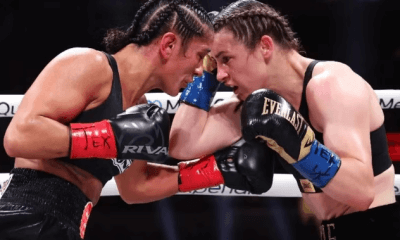
 Featured Articles3 weeks ago
Featured Articles3 weeks agoResults and Recaps from New York Where Taylor Edged Serrano Once Again
-

 Featured Articles5 days ago
Featured Articles5 days agoThe Hauser Report: Zayas-Garcia, Pacquiao, Usyk, and the NYSAC
-
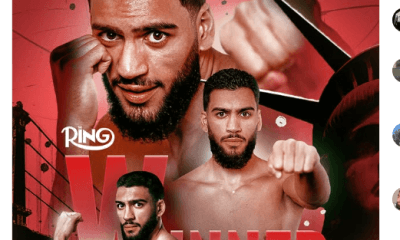
 Featured Articles3 weeks ago
Featured Articles3 weeks agoResults and Recaps from NYC where Hamzah Sheeraz was Spectacular
-
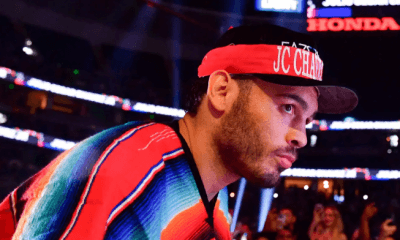
 Featured Articles4 weeks ago
Featured Articles4 weeks agoFrom a Sympathetic Figure to a Pariah: The Travails of Julio Cesar Chavez Jr
-
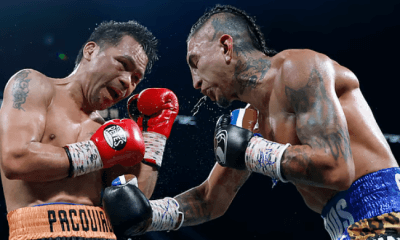
 Featured Articles2 weeks ago
Featured Articles2 weeks agoManny Pacquiao and Mario Barrios Fight to a Draw; Fundora stops Tim Tszyu
-
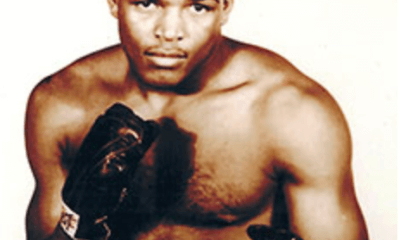
 Featured Articles3 weeks ago
Featured Articles3 weeks agoPhiladelphia Welterweight Gil Turner, a Phenom, Now Rests in an Unmarked Grave
-
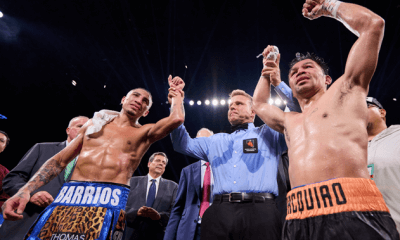
 Featured Articles2 weeks ago
Featured Articles2 weeks agoArne’s Almanac: Pacquiao-Barrios Redux
-
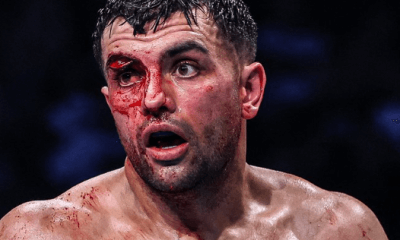
 Featured Articles4 weeks ago
Featured Articles4 weeks agoCatterall vs Eubank Ends Prematurely; Catterall Wins a Technical Decision
















